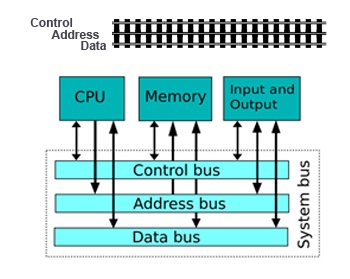You may also see it spelled as "buss", "buss bar", "bussbar", or "busbar" in some texts. below is the Wikipedia definition which pretty much nails it:"In
electrical power distribution, a
busbar (also spelled
bus bar, or sometimes as
buss bar or
bussbar, with the term
bus being a contraction of the Latin
omnibus, "for all", or
buss being short for
buttress) is a metallic strip or bar (typically
copper,
brass or
aluminium) that conducts
electricity within a
switchboard,
distribution board,
substation,
battery bank, or other electrical apparatus. Busbars are used to carry substantial
electric currents over relatively short distances; their greater surface area (compared to a wire of the same weight) reduces losses due to
corona discharge. Busbars are not normally
structural members."
Having said that in older substations or platn switchyards you may see large capacity conductor being used as bus. In those situations it's commonly known as flexible bus.
























